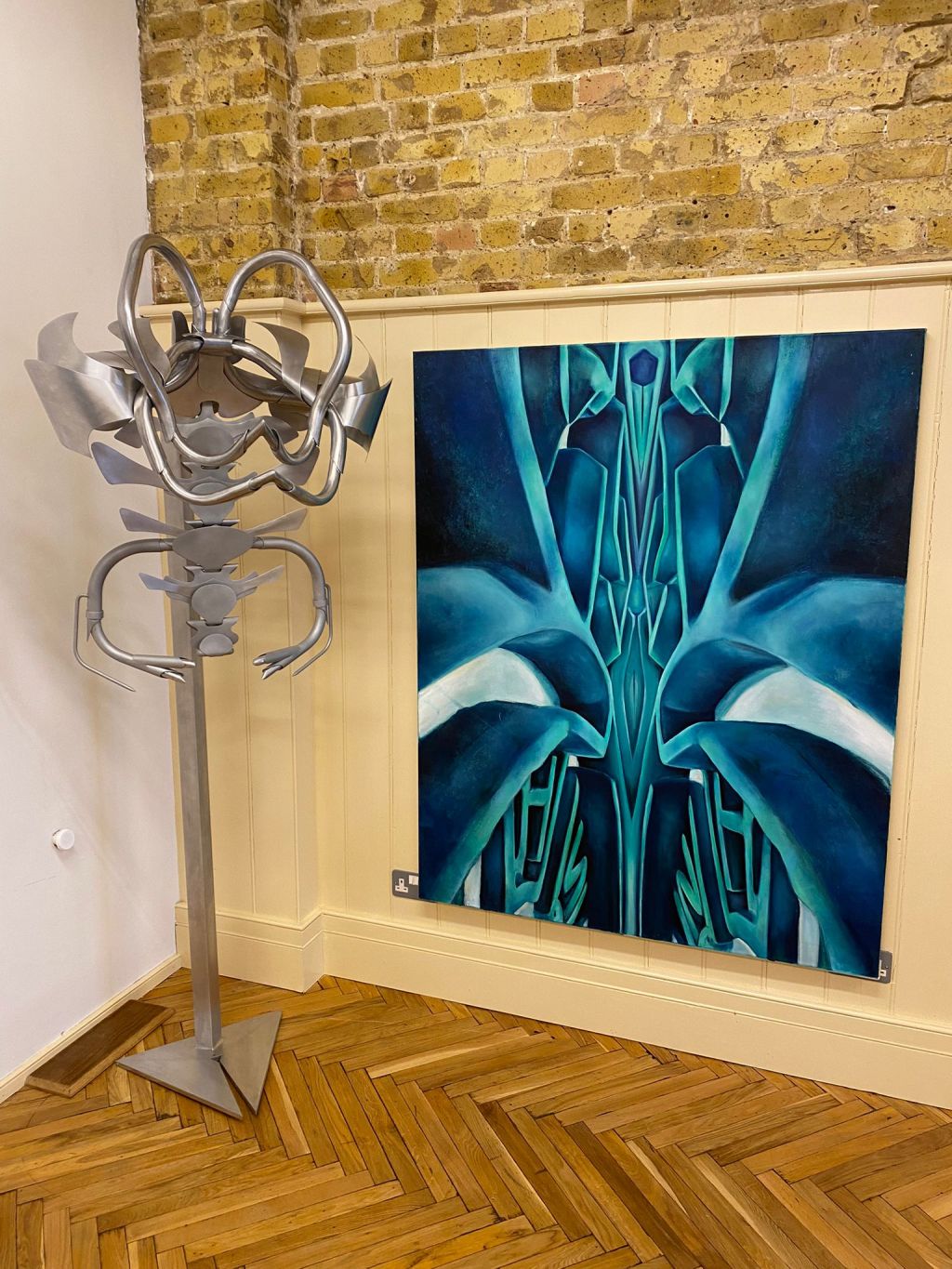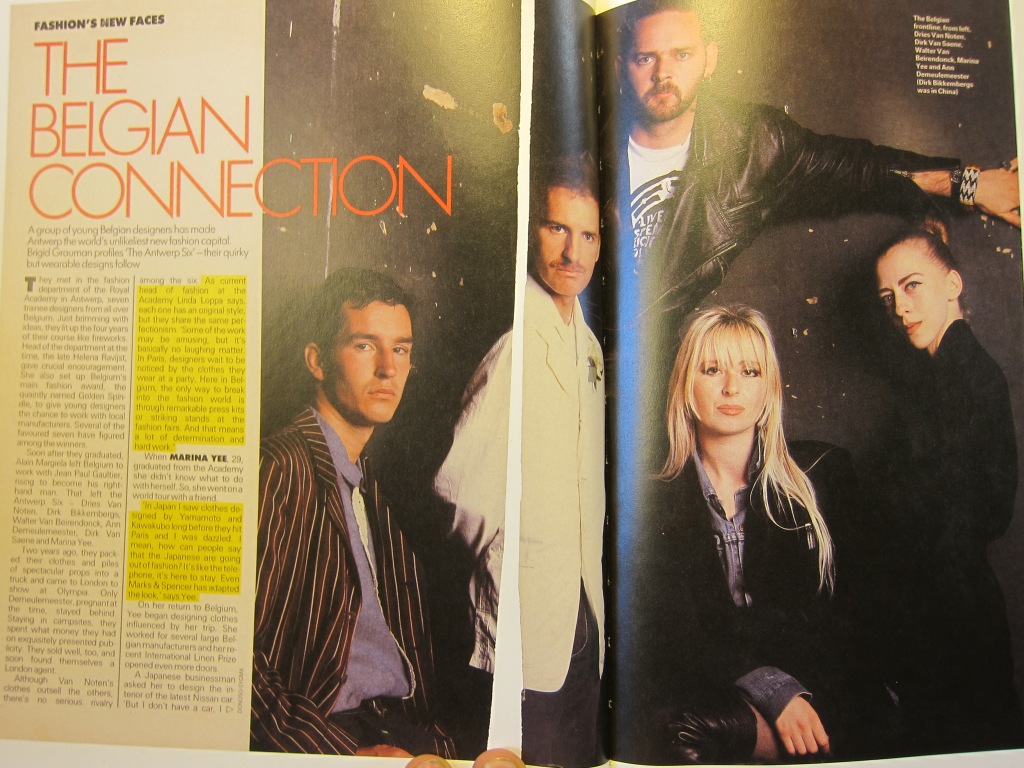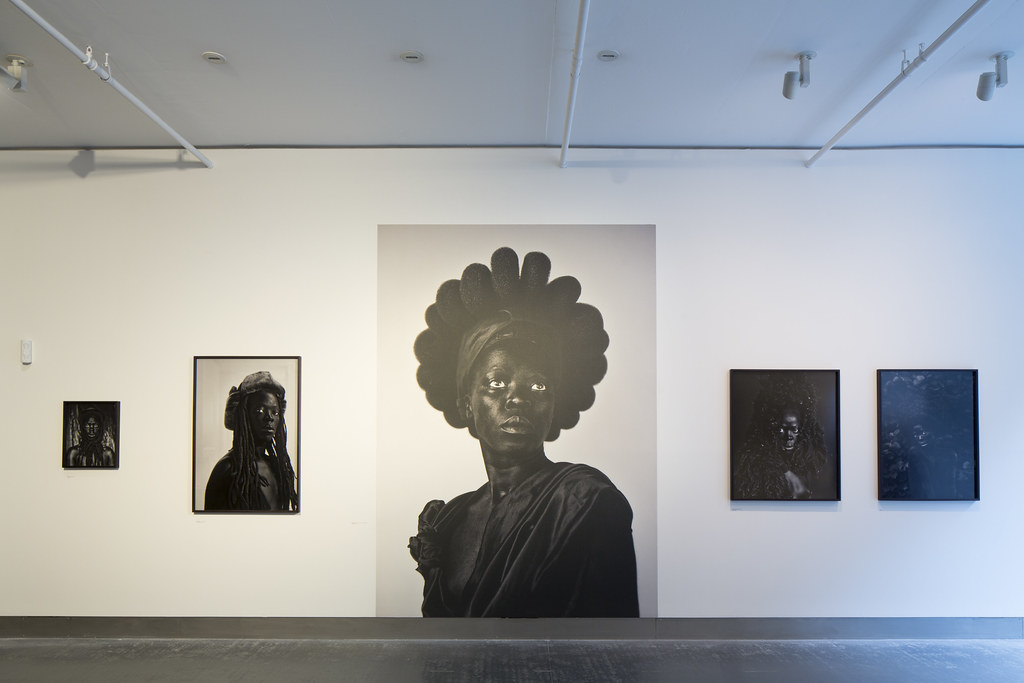Femke van Gemert, a former fashion and interior designer, now breathes new life into discarded textiles through her art. She embraces imperfection and the passage of time, crafting unique pieces that reflect the organic beauty of nature. In her commissioned works, she integrates personal or community textiles, adding a meaningful touch. Passionate about sustainability, Femke actively raises awareness about textile waste and promotes eco-conscious creativity.

Your transition from fashion and interior design to textile art is fascinating. Can you tell us what inspired this shift in your creative focus?
“I started studying fashion because of a deep love and fascination for tangible materials and colors. Even as a young child, I would cut old clothes into scraps and mount them on cardboard to make collages. I enjoyed fondling fabrics, beads, and feathers I found to decorate my room or my Barbie dolls. So, pursuing fashion design seemed like a logical path.
I worked in the fashion industry for about a decade, and then fast fashion entered the markets, bringing about significant changes in my clients’ collections. Everything had to be made faster and cheaper to compete with the fast fashion chain stores. Production initially took place in Europe, with me, as a designer, connecting with the makers in factories. However, it shifted to sending drawings to the Far East and receiving samples back in a box, with no idea about the makers or the fabrics chosen over there.
One day, while on a plane with the boss and the product manager of a company I designed for, I had a pivotal realization. The boss and the product manager were calculating how much profit they could make the next year by pushing up the margins with the Chinese director of the production factory. It suddenly became clear to me that these men, who were making the decisions, were in it solely for the money, while I was working tirelessly to create a well-designed, high-quality collection.
This realization struck me further as I remembered seeing rejected samples piling up behind a factory. The entire essence of creating something good was lost in this rush for quicker, cheaper, more profitable, but poorer quality fashion. I missed the feeling of fabrics in my hands and the time to develop something of lasting quality. My awareness grew as I studied figures and facts about fashion waste worldwide, realizing the environmental pollution and labor exploitation associated with the modern way fashion is made. All of this led me to go back to my inner drive to create and my love for textiles. I did not want to leave a heavy ecological footprint, so I decided to use only discarded, repurposed textiles and other waste materials for my creations.”
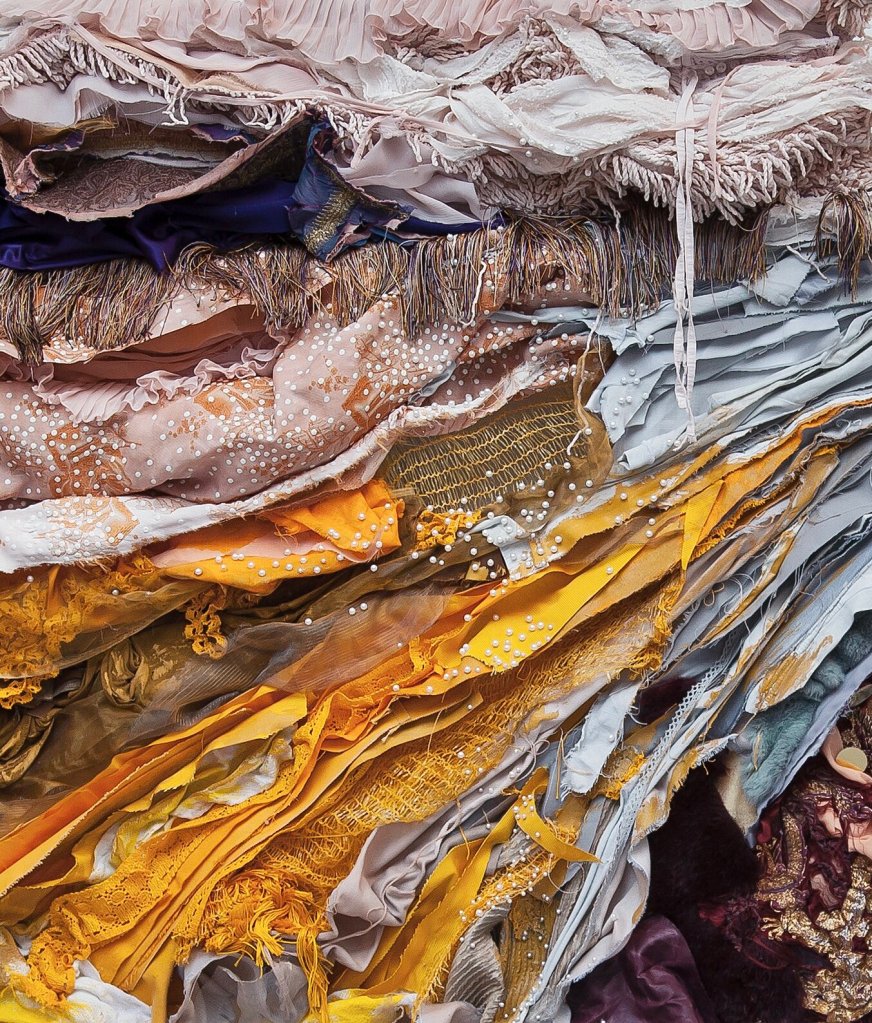
The concept of “imperfection and degradation over time” is central to your work. How do you incorporate these elements into your textile art, and what do they represent to you?
“Somebody who visited an exhibition of my work said to me, ‘Your work is a sort of modern-day Vanitas.’ I liked that. I want my works to express the passage of time, as is already represented in the used textiles that show traces of wear and their former use. We are so obsessed with perfection; that’s why we keep on buying stuff, because we want things to be new and unblemished. Meanwhile, our presence on earth is shorter than the lifespan of the stuff we buy. In my work, I aim to show aging, a vision that isn’t perfect, shiny, and new, but something alive that ages and changes over time. It’s like what you see in anything organic in nature and what happens to us humans.”
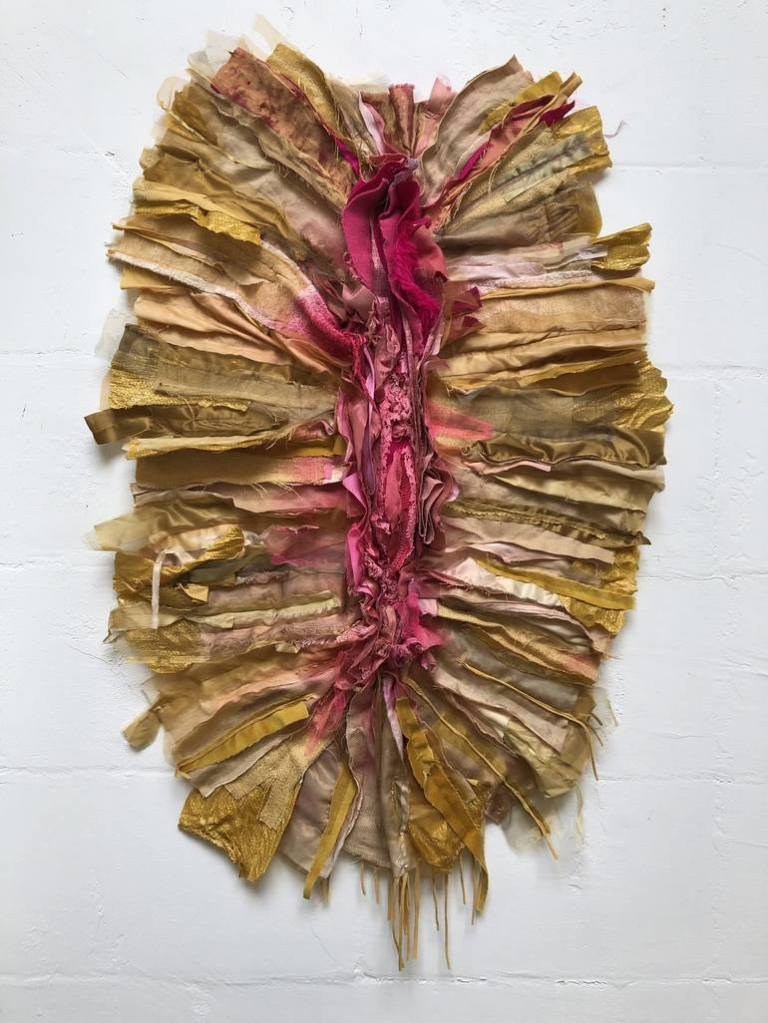
You mentioned that every piece of textile has a story and beauty. Could you share a memorable story behind one of your textile creations?
“In commissioned work, I can create using textiles that belong to the client. In one particular case, a lady gave me the clothes of her deceased mother and brother. She was the only one left in her family. That made the piece very meaningful — a memory piece, an abstract family portrait almost — on a very personal level, using scraps of clothes from her loved ones.”
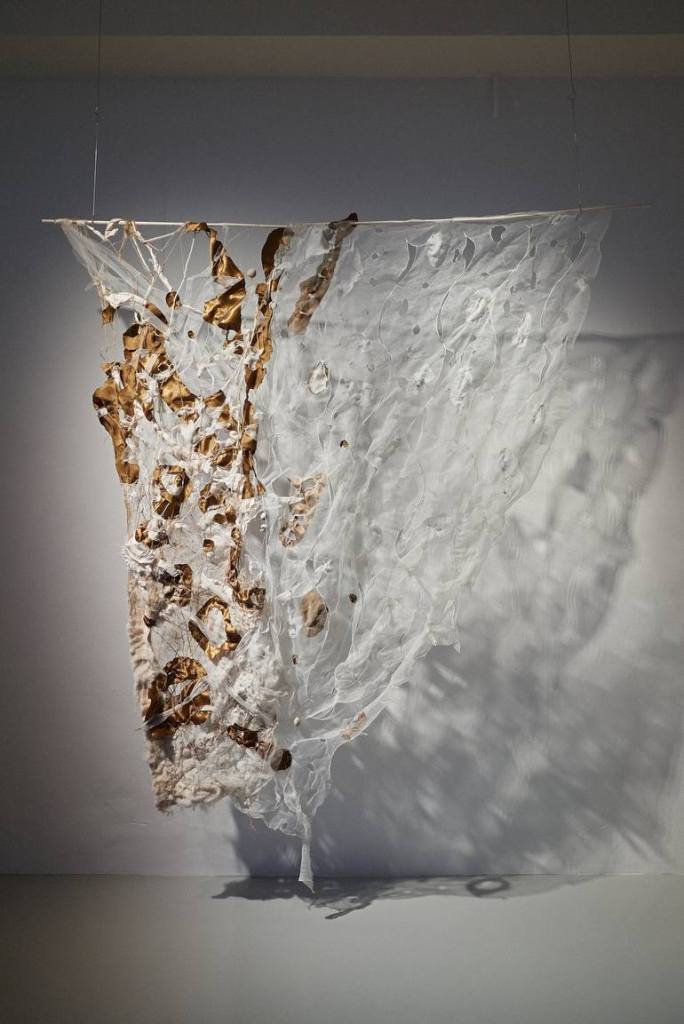
Your art often involves revaluing and repurposing used textiles. Could you walk us through your creative process when working with these materials?
“I collect and get offered textiles, leather, fur, yarns from so many sources. I select them by color, and archive them in my studio in a giant closet. This collecting, cleaning, storage is continuous work.
It begins with a feeling I want to express, an experience or observation. In my mind an idea forms, an inspiration gets visualized, a little map of what shape, color range and sort of textures I want to create. I make sketches in a notebook that I always have lying around somewhere. But these are very rough sketches. Then I go to this closet and pull out many scraps to start making a selection, get surprised by something I find there, never find exactly what I envisioned and so the idea evolves. Than during the process other materials are added, some taken away, this way the composition grows. I lay out the composition on a table, start creating lines, movements with the materials. Decide its volume, look, shape, detailing while working on it. It is a growing, evolving process, not strictly directed up front.”

Can you walk us through a typical working day in your studio? How do you organize and structure your day to bring your textile art to life?
“The morning is consumed by various ‘must-do’ tasks, including emails and calls that I need to make, followed by a bike ride to my studio in another part of town. Along the way, I buy groceries or materials that I need, occasionally stopping my bike when I come across something wonderful near a trash container that I find inspiring to add to my material closet. After lunch, I handle administrative tasks, contacts, emails, and planning. Although these tasks are never truly finished (because I don’t enjoy them), I do my best to complete as much as possible. In the afternoons, my favorite time for creative flow begins. I usually work on two or three pieces simultaneously—starting a new one, finishing one that’s nearly ready—and I shift between them, concentrating for a few hours, sometimes until the evening.”

Your educational efforts in raising awareness about textile waste are commendable. Can you tell us more about the impact you hope to achieve through your art?
“In workshops with various groups of people, but always with discarded clothes, the conversations start about fashion buying and why tossing it. People tell me why they buy, how they feel about fashion waste growing worldwide. They comment on the information I share with them about what happens with textile waste after it is discarded. The workshops always are “hands on”, we make something out of the discarded garments. These simple craft technisques that I teach, make people happily surprised of what they can do without any experience, with their own hands. And it makes people content and relaxed, they open up. Hand labour, crafts, is something all people can do but gets more and more lost in this digital era. I hope people will choose more wisely before buying something new, what is very hard cause we are bombarded with ads to buy, buy, buy by the fast fashion marketing machines. I Hope crafting gets revived, that people enjoy creating with their hands.”

Could you describe a challenging or unconventional material you’ve worked with and how it pushed the boundaries of your creativity?
“Fruit and veggie nets—these plastic, colorful, yet horrible single-use packagings for healthy food—posed a challenge when attempting to upcycle them into beautiful, organic-looking sheets for a large installation.
During an artist residency in Mexico, I worked with dried plants, cacti, textiles, and mosquito netting. I aimed to use waste materials found locally at the site. The process involved an intense research period, filled with numerous failures and mistakes, but it was an incredibly interesting journey. This initial experiment has led to the creation of more installations and 3D sculptural works.”
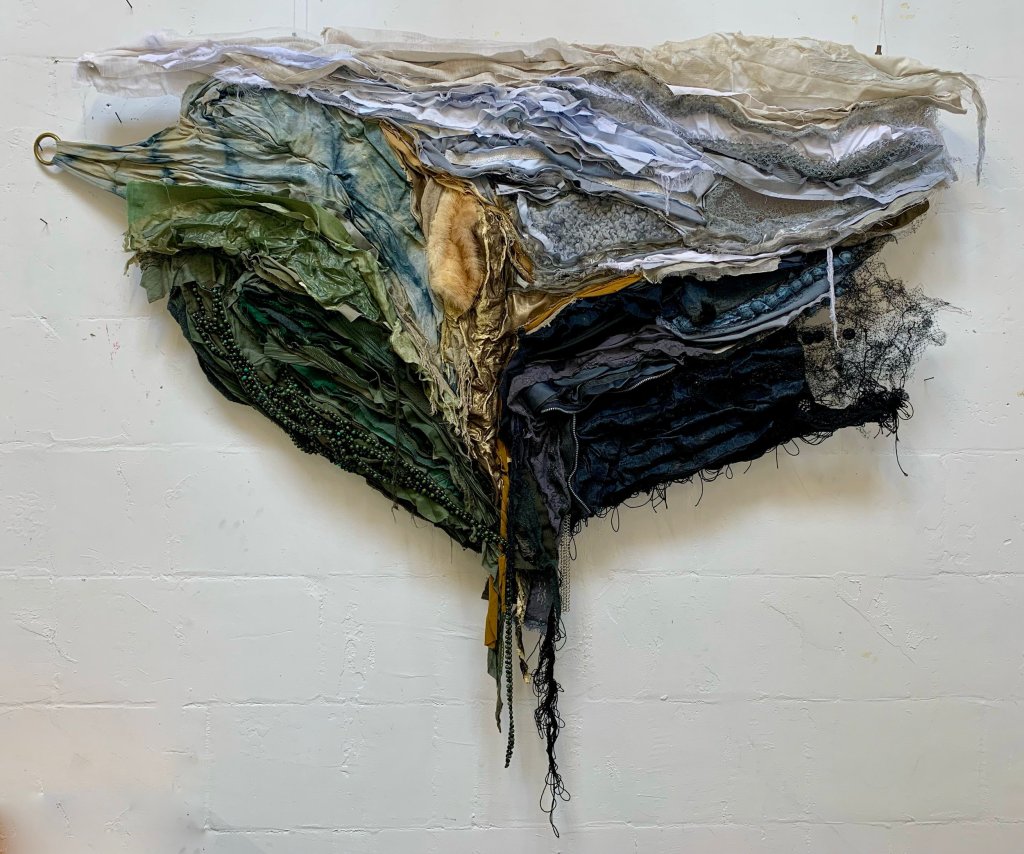
Looking ahead, what exciting projects or artistic directions do you envision for your future in textile art?
“Big art projects with local (textile) waste, with communities, like I did before for libraries, or with a group of other textile lovers. I imagine doing it with a whole village or city, a university or giant company to create something enormous. There is enough textile waste everywhere to work with, so I want to make it BIG for commissions, for big buildings!
Meanwhile, I will always try developing new ways in my autonomous work, keep challenging myself and experimenting too. I want to create more sculptural, immersive pieces. I hope to have a solo exhibition one day in a good museum.”



